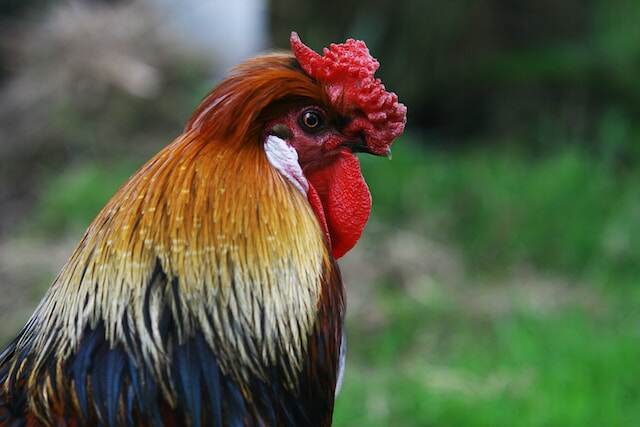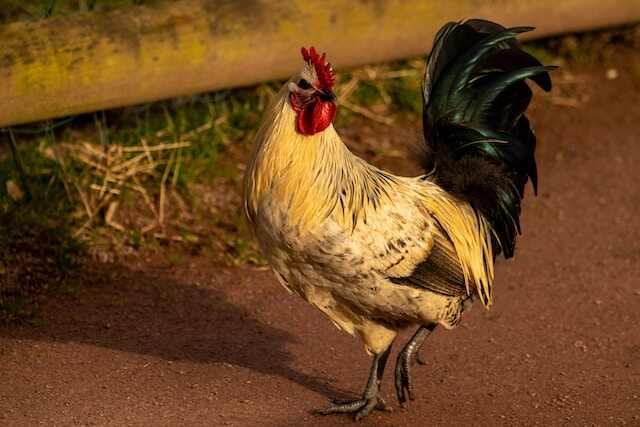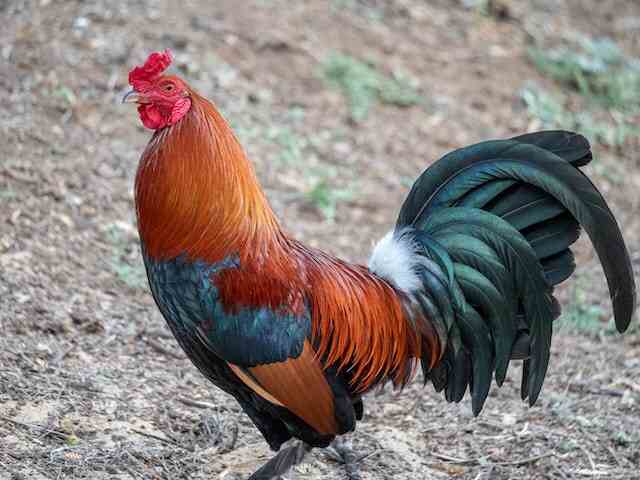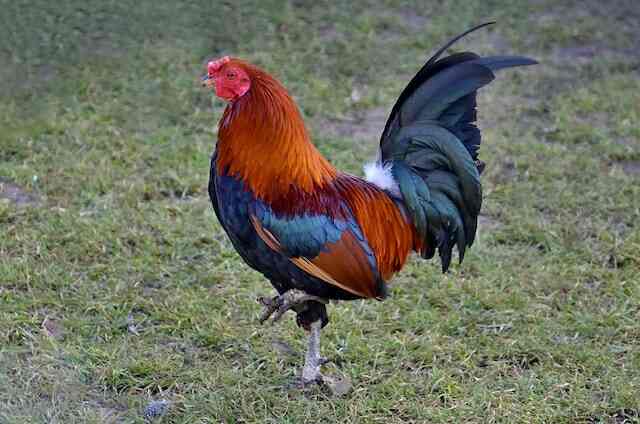Every country has a national bird that serves as a symbol of its identity and cultural values. However, not all national birds are officially designated, and France is one such country. Despite having several birds associated with its culture and history, there is no official national bird of France.
In this article, we will explore the significance of birds in French culture, examine some of the species commonly found in the country’s natural habitats, and discuss the ongoing debate surrounding France’s national bird.
Table of Contents
- 1 Key Takeaways:
- 2 What is The National Bird of France?
- 3 The Historical Significance of National Birds
- 4 The Cultural Importance of Birds in France
- 5 Birds Found in France’s Natural Habitats
- 6 The Debate Surrounding France’s National Bird
- 7 The Symbolic Representation of the Gallic Rooster
- 8 Other Birds with Symbolic Associations in France
- 9 The Future of France’s National Bird
- 10 The Future of France’s National Bird
- 11 FAQs: What is The National Bird of France?
- 11.1 What is the national bird of France?
- 11.2 Why is having a national bird significant?
- 11.3 Are birds culturally important in France?
- 11.4 What are some bird species found in France’s natural habitats?
- 11.5 Is there an ongoing debate about France’s national bird?
- 11.6 What is the symbolic representation of the Gallic Rooster?
- 11.7 Are there any other birds with symbolic associations in France?
- 11.8 What does the future hold for France’s national bird?
- 12 Author
Key Takeaways:
- France does not have an official national bird.
- Birds play a significant role in French culture, art, and literature.
- The Gallic Rooster is a widely recognized symbol of France, but there is no consensus on its status as the official national bird.
What is The National Bird of France?
The national bird of France is the Gallic Rooster, also known as the Coq Gaulois. The rooster has been a symbol of France since the Middle Ages and is often used to represent the country’s national identity and values. The Gallic Rooster is featured as the official emblem of France, as well as on many French coins, stamps, and other official documents.
The Historical Significance of National Birds
Having a designated national bird is a way for a country to represent its identity, values, and culture through a natural symbol. Throughout history, birds have been revered in many cultures and were often used as a symbol of power, freedom, and wisdom. In France, there is a long tradition of assigning symbolic importance to birds, and they have become an essential part of the country’s culture and heritage.
Birds have always been an essential part of French art, literature, and folklore, as well as the cultural practices of everyday life. From the medieval bestiaries and illuminated manuscripts to contemporary French cinema, birds have played an important role in French culture.
The Gallic Rooster, in particular, has been a symbol of the French nation for centuries. This bird is depicted on the French coat of arms and has been used in various official emblems, logos, and national symbols. The Gallic Rooster represents vigilance, courage, and the fighting spirit of the French people, and is regarded as a national treasure.
Other birds with symbolic associations in France include the dove, often associated with peace and purity, and the owl, which represents wisdom, mystery, and magic.
The Cultural Importance of Birds in France
Birds have played a significant role in French culture, symbolizing various cultural and historical aspects of the country. Being a land of diverse landscapes and habitats, France has a rich variety of bird species, each with their own symbolic meanings.
One of the most recognized and revered birds in France is the Gallic Rooster. The rooster’s association with France dates back to the Roman Empire, when the Gauls, an ancient Celtic people who inhabited present-day France, adorned their helmets with rooster feathers. The Gallic Rooster became an official symbol of France during the French Revolution, where it represented a heraldic symbol of vigilance and courage.
The Gallic Rooster’s significance in French culture goes beyond its role as a national symbol. Roosters have a long-standing history in French folklore and are often featured in French art and literature. Roosters are known for their fierce and courageous nature, making them a fitting representation of the proud and resilient French spirit.
Other bird species also hold symbolic associations in French culture. The dove, for instance, represents peace and harmony, while the owl is a symbol of wisdom and knowledge. Birds feature prominently in French art, particularly in medieval manuscripts and tapestries, where they were often depicted alongside other animals in scenes of hunting and falconry.
The Legend of the Swan Knight
One of the most famous bird-related legends in France is that of the Swan Knight. According to the legend, a knight was transformed into a swan by an evil sorceress, and could only regain his human form if he found a woman who would love and marry him as a swan.
Eventually, the knight found such a woman and was restored to human form. The legend has been adapted into various French art forms, including paintings, sculptures, and literature.
Birds Found in France’s Natural Habitats
France boasts a diverse range of natural habitats, from mountainous regions to coastal wetlands. These habitats are home to a variety of bird species, many of which hold significant ecological importance. Let us take a closer look at some of the birds commonly found in France’s natural habitats.
| Bird Species | Feature |
|---|---|
| Great Tit | Small, active bird with a distinctive black head and white cheeks. Often found in woodland areas. |
| Common Kestrel | A bird of prey that typically hunts small rodents and birds. Can be found in open fields and along highways. |
| Quail | A small game bird with a plump body and distinctive markings. Often found in grasslands and agricultural landscapes. |
| Mediterranean Gull | A medium-sized gull with a black head and red beak. Commonly found along the French coast. |
While each of these bird species holds ecological importance, none of them have been officially designated as the national bird of France. However, the debate surrounding this topic continues to be a point of interest for many.
Future Implications
As France continues to evolve and change, it remains to be seen whether an official national bird will be designated. However, the presence of birds in France’s cultural and natural spaces will undoubtedly continue to hold significance.
The Debate Surrounding France’s National Bird
France is a country with a rich history and culture, and the question of its national bird has been a topic of debate for decades. While some argue that the Gallic Rooster is the official national bird of France, others believe that there should be a designated bird chosen by the government.
The debate surrounding France’s national bird stems from the fact that there is no official designation. This has led to confusion and disagreement among French citizens and international observers alike.
The Argument for the Gallic Rooster
The Gallic Rooster has a long history of symbolic association with France, dating back to the Gallic Wars of Julius Caesar. It has been depicted in French art and literature for centuries and is widely recognized as a symbol of the country. Some argue that because of this rich cultural history, the Gallic Rooster should be considered France’s official national bird.
The Argument for a Designated Bird
Others argue that France should choose an official national bird that reflects the country’s ecological diversity and conservation efforts. They point out that the Gallic Rooster is a domesticated species and not representative of France’s natural habitats. In addition, there are concerns that the Gallic Rooster’s association with traditional French values may not align with the country’s modern identity.
While there are no plans to officially designate a national bird of France at this time, the debate surrounding the topic is likely to continue. Regardless of the outcome, the discussion highlights the cultural and ecological significance of birds in France and their role in representing a nation’s identity.
The Symbolic Representation of the Gallic Rooster
The Gallic Rooster, or le Coq Gaulois in French, is widely recognized as a symbol of France. It is often depicted crowing triumphantly and is commonly associated with the values of vigilance, courage, and pride in one’s country.
The historical roots of the Gallic Rooster date back to the ancient Gauls, who believed that the bird had divine qualities and served as a messenger between the living and the dead. During the Middle Ages, the Gallic Rooster became a popular emblem on French coins and insignia.
The bird’s prominence as a symbol of French nationalism was solidified during the French Revolution. In 1830, the Gallic Rooster was officially recognized as a national symbol by the French government and was depicted on the national emblem, alongside the motto “Liberté, égalité, fraternité.”
The Gallic Rooster has continued to be a powerful symbol of French national identity, appearing on everything from sports team logos to postage stamps. It is also commonly referenced in French literature and art, where it is used to represent the spirit and character of the French people.
The emblematic status of the Gallic Rooster in France makes it a natural contender for the title of national bird. However, the debate over whether it should hold this official designation remains ongoing.
Other Birds with Symbolic Associations in France
In addition to the Gallic Rooster, there are several other bird species that hold symbolic associations in France.
One of the most common is the dove, which is often associated with peace and freedom. It has been used as a symbol in many French artworks and is also seen as a representation of the Holy Spirit in Christian iconography.
The owl is also a symbol with significant meaning in French culture. It is often associated with wisdom, mystery, and magic and has been used as a symbol in various French literary works. In particular, the owl is often seen as a symbol of Athena, the goddess of wisdom, who was highly regarded in ancient Greek culture and mythology.
Overall, birds have played an important role in French culture and history, whether as symbolic representations or as vital components of their natural environment.
The Future of France’s National Bird
The debate surrounding France’s national bird has been ongoing for years, with no official designation in place. However, many conservationists and bird enthusiasts continue to advocate for the selection of an emblematic bird that represents France’s cultural and ecological identity.
Some argue that the Gallic Rooster, with its historical and cultural significance, should be designated as France’s official national bird. Others propose the Eurasian Blue Tit, a small but colorful bird that is commonly found throughout France’s woodlands and gardens.
Despite the ongoing debate, the French government has not taken any official action to recognize a national bird. As such, the future of France’s national bird remains uncertain, with the possibility of continued debate or the eventual selection of an official emblematic bird.
Regardless of the outcome, the discussion surrounding France’s national bird highlights the country’s rich cultural and ecological heritage, and the importance of protecting its wildlife for future generations.
The Future of France’s National Bird
While the debate on France’s official national bird continues, it remains uncertain whether a decision will be made in the near future. Some argue that the Gallic Rooster is already ingrained in French culture and should be recognized as the official emblematic bird. Others suggest that a scientific approach should be taken to select a bird species that is ecologically significant and reflects France’s natural heritage.
Regardless of the outcome, birds will continue to hold cultural and ecological importance in France, and their symbolism will remain ingrained in French art, literature, and folklore.
FAQs: What is The National Bird of France?
What is the national bird of France?
The national bird of France is the Gallic Rooster, also known as the Coq Gaulois.
Why is having a national bird significant?
Having a national bird is significant as it represents a country’s identity and serves as a symbol of national pride and unity.
Are birds culturally important in France?
Yes, birds hold cultural importance in France as they are often depicted in art, literature, and folklore, showcasing their symbolic significance.
What are some bird species found in France’s natural habitats?
Some bird species commonly found in France’s natural habitats include the European Robin, Eurasian Blackbird, and the Common Wood Pigeon.
Is there an ongoing debate about France’s national bird?
Yes, there is an ongoing debate regarding the official national bird of France, with different opinions and arguments being discussed.
What is the symbolic representation of the Gallic Rooster?
The Gallic Rooster symbolizes strength, courage, and patriotism, making it a significant emblem in France’s cultural and historical context.
Are there any other birds with symbolic associations in France?
Yes, other bird species like the dove and the owl also hold symbolic associations in France, representing peace and wisdom, respectively.
What does the future hold for France’s national bird?
The future of France’s national bird remains uncertain, with possibilities ranging from an official designation to continued debate and discussion.






